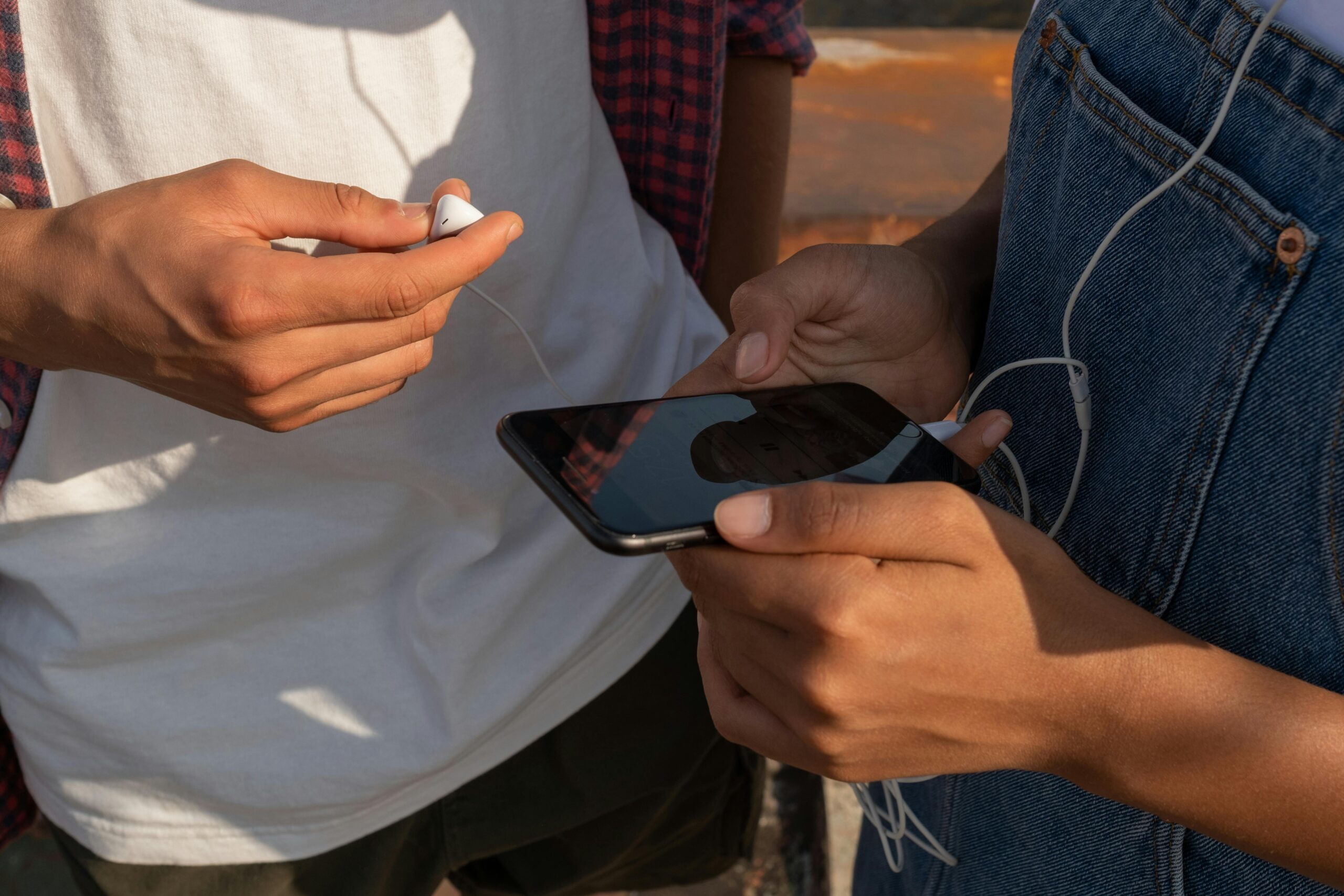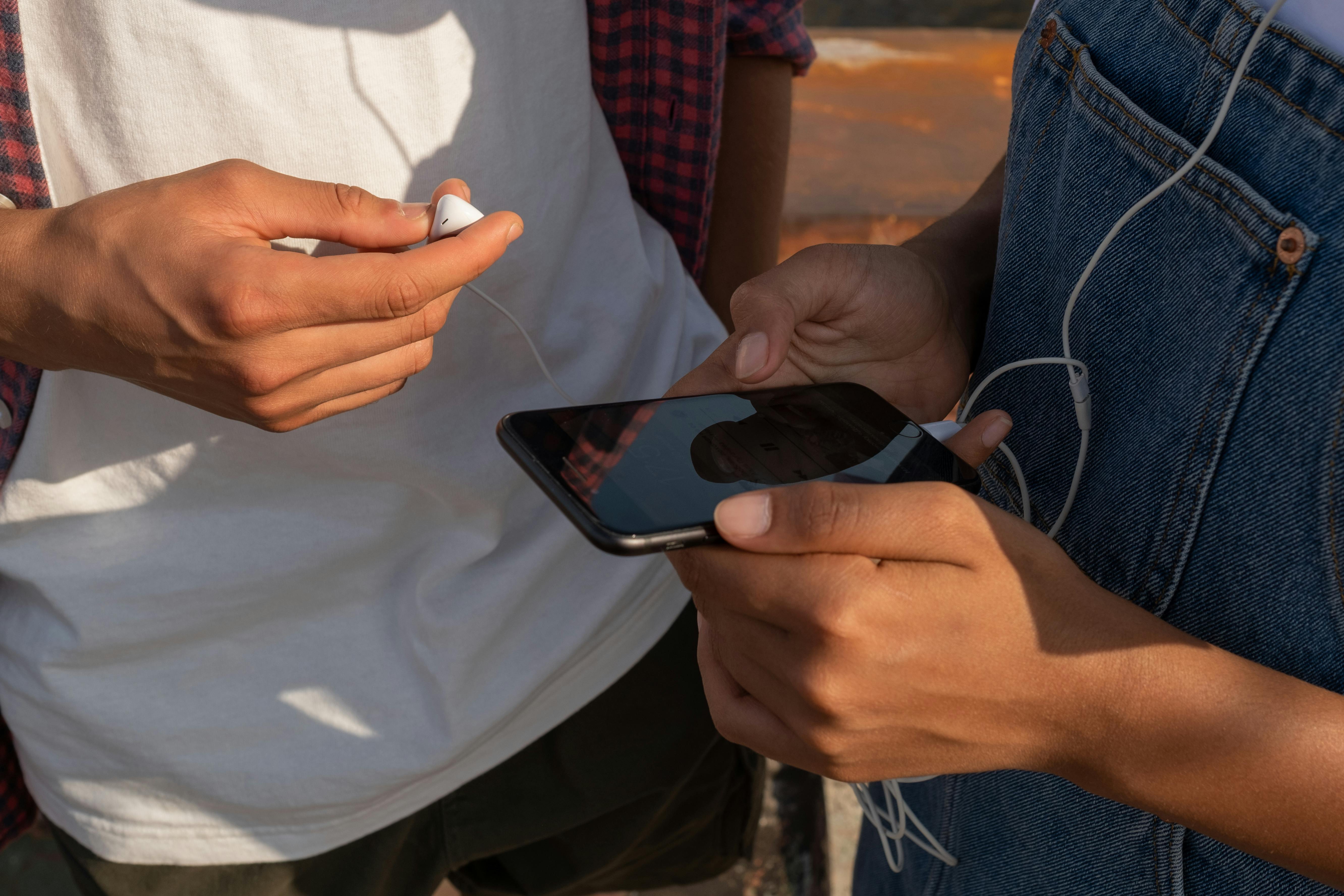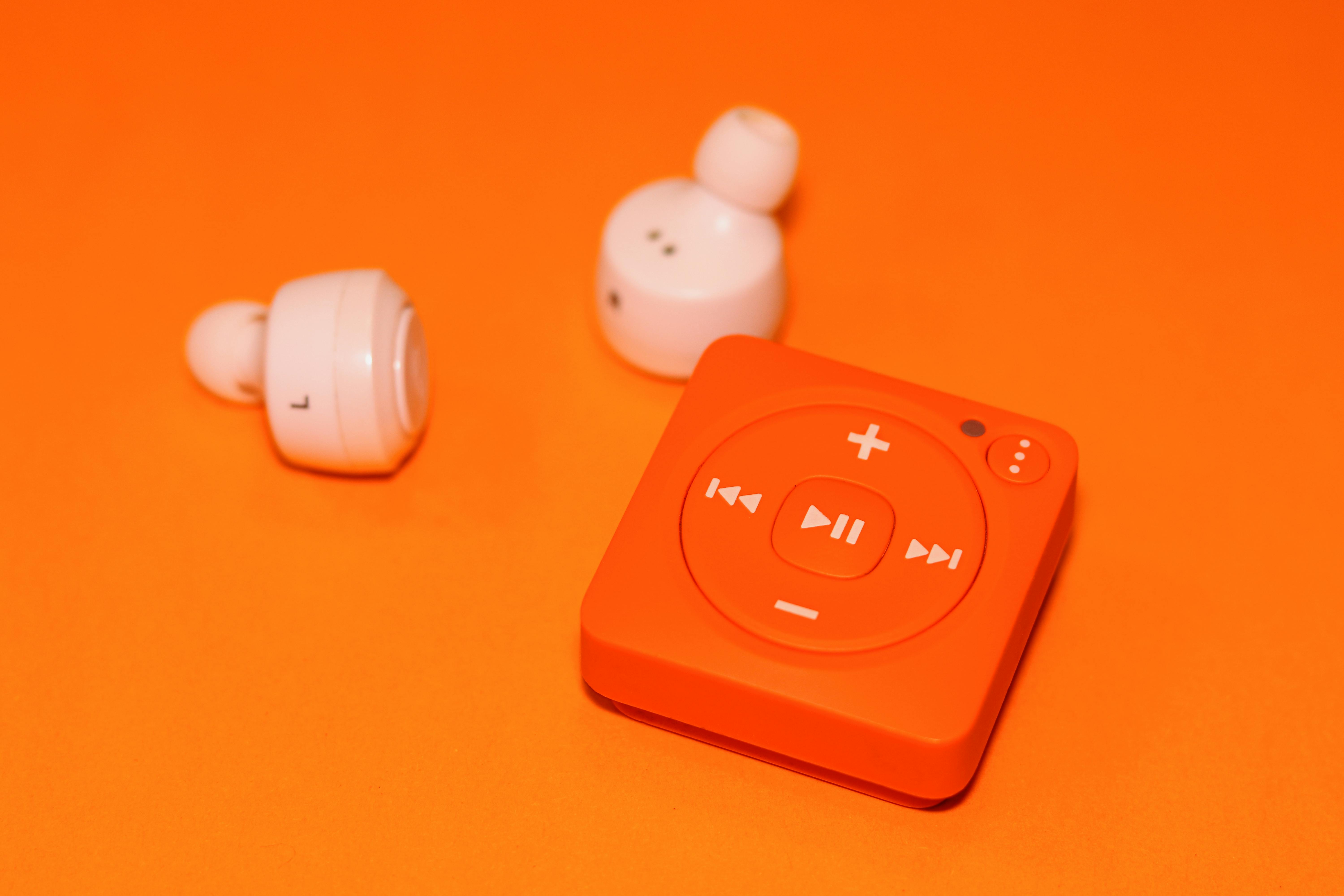So, you’re curious about how to go from Youtube converter MP3 to M4R and wondering why this little trick isn’t talked about more? Honestly, same here. You’d think transforming your audio files would be this super straightforward thing everyone knows, but nope, it’s like a hidden art. What if we’ve been wrong all along, thinking MP3s were king and M4R files just some obscure cousin nobody really needed? Not gonna lie, discovering how to easily convert those juicy Youtube MP3s into M4R ringtone-friendly formats kinda blew my mind.
Maybe it’s just me, but there’s something oddly satisfying about having your favourite track as a ringtone, and yet, finding a reliable Youtube converter MP3 to M4R tool feels like hunting for a needle in a haystack. Why is no one talking about the easiest ways to do this without downloading a million sketchy apps or dealing with clunky software? If you’ve ever scratched your head wondering how to get from MP3 — which is everywhere — to M4R, which is basically the ringtone file format for iPhones, this is your lucky day. Because yes, you can totally transform your audio files with just a few clicks, and no, it doesn’t have to be a headache.
Let’s be real, between dodging those annoying ads on free converters and figuring out if your file will even work once converted, it’s a minefield out there. But don’t stress, this guide’s gonna walk you through the simplest, most effective ways to use a Youtube converter MP3 to M4R without losing your mind. So, stick around if you want to stop asking “how do I turn my MP3 into an M4R?” and actually get it done — like, now.
What Is a YouTube Converter MP3 to M4R and Why You Need One in 2024
So, you’ve probably stumbled across the phrase “YouTube Converter MP3 to M4R” somewhere online, right? And maybe you’re scratching your head thinking, “What on earth is that, and why should I even care in 2024?” Honestly, I get it. The whole world of audio formats and converters can feel like a confusing mess—like trying to explain cricket to someone who’s never seen it. But stick with me, because this actually might save you some hassle, or at least kill some boredom on a rainy New York afternoon. Or, you know, 2am when you’re way too wired to sleep and scrolling through social media.
What Is a YouTube Converter MP3 to M4R Anyway?
Alright, let’s break this down. A YouTube converter MP3 to M4R is basically an online tool or software that lets you take audio from YouTube videos—usually in MP3 format—and switch it over to M4R. Now, MP3 is the classic, almost boringly familiar audio file format, right? Everyone’s heard of it. M4R, on the other hand, is a bit more niche. It’s the ringtone format for iPhones. Yep, that little file extension that makes your phone ring with your favourite tune instead of the default “beep beep.”
Why would you want to do that? Well, if you’ve ever tried setting a custom ringtone on your iPhone, you’ll know you can’t just slap in an MP3. Apple’s picky, as usual. You need an M4R file for the ringtone to work. So, a YouTube converter mp3 to m4r helps you grab that perfect snippet from a YouTube video—maybe some indie band’s single, or that hilarious clip you keep replaying—and turn it into a ringtone file your phone actually recognises.
Why You Might Actually Need One in 2024 (Don’t Roll Your Eyes Yet)
Okay, I know what you’re thinking: “Why bother? Can’t I just use the default ringtones or download stuff from iTunes?” Sure, but where’s the fun (or the rebellion) in that? Plus, a lot of people still want custom ringtones that aren’t just the same old stuff everyone else has. It’s like wanting to wear a coat that doesn’t make you look like a walking billboard for some brand.
Here’s why this converter thing is still relevant:
- Customisation is king: People love making their devices feel personal, and ringtones are part of that.
- YouTube’s treasure trove: There are millions of audio clips on YouTube, from songs to speeches, that you might want to keep handy.
- Easy and free: Many converters online don’t charge a penny, unlike some sketchy apps or paid ringtone stores.
- No tech wizardry needed: You don’t have to be a geek to convert files anymore, which is a relief because I’m definitely not one.
But, heads up, not all converters are created equal. Some are dodgy af, with ads popping up like weeds in a garden, or worse, malware. So, always double-check before clicking.
Youtube Converter Mp3 To M4r: How To Easily Transform Your Audio Files
Now, for the practical bit—how do you actually do this without losing your mind? Here’s a rough step-by-step guide, because who has time for complicated tutorials, honestly?
- Find your YouTube video: Pick the clip that’s gonna be your ringtone.
- Copy the URL: Yep, that web address thingy.
- Head over to a reliable YouTube converter mp3 to m4r site: There are tons out there, but maybe avoid the ones that look like they were designed in 1998.
- Paste the URL into the converter: Usually, there’s a box begging you to drop the link in.
- Choose MP3 as the initial format (if needed): Some sites convert straight to M4R, some need the MP3 first.
- Convert to M4R: This is the magic bit.
- Download the M4R file: Save it somewhere you’ll remember.
- Sync to your iPhone: Use iTunes or Finder on Mac to add it as a ringtone.
- Set it as your ringtone: Done and dusted.
Honestly, it sounds more complicated written down than it actually is. But, fair warning, sometimes the conversion speed depends on your internet connection and the site’s servers. And sometimes it just hangs forever, which is annoying.
Quick Table: MP3 vs M4R
| Feature | MP3 | M4R |
|---|---|---|
| Common Use | General audio playback | iPhone ringtones |
| Compatibility |
Top 7 Easiest Ways to Convert YouTube MP3 Files to M4R Ringtones Quickly
Alright, so here we are, diving headfirst into the wonderfully thrilling world of converting YouTube MP3 files into M4R ringtones. Yeah, I know, you’re probably thinking, “Why on earth would anyone care about that?” Well, mate, turns out a fair few folks do, especially if you’re stuck with an iPhone and want to jazz up your ringtone without paying a fortune or wrestling with some clunky software. So, buckle up as we explore the top 7 easiest ways to convert YouTube MP3 files to M4R ringtones quickly — because apparently, this is a thing. Also, if you’re wondering about “Youtube Converter Mp3 To M4r” stuff, you’re in the right place, even if it sounds like some sort of obscure spell from Harry Potter.
Why This Still Matters (Because You’re Not Just Making Noise)
You might ask, “Why bother with M4R format anyway? Isn’t MP3 good enough?” Well, for iPhone users, the M4R format is the official ringtone format. Apple’s picky like that. You can’t just slap an MP3 on your iPhone and call it a ringtone — nope, gotta convert it first, or you’re outta luck.
Historically, ringtones have been a bit of a pain. Remember the days of Nokia and polyphonic beeps? Now it’s all about personalised tones, and if you’re like me, you want your phone to sound different from everyone else’s. So converting your favourite YouTube MP3 into a ringtone is pretty much your ticket to audio uniqueness.
Anyway, what was I saying again? Oh right, the easiest methods to do this without losing your mind. Let’s get into it.
The 7 Easiest Ways to Convert YouTube MP3 Files to M4R Ringtones Quickly
Online Audio Converters
These are like the Swiss Army knives of audio file conversion. You upload your MP3, select M4R, and boom — ringtone ready in minutes. Websites like Zamzar, Online Audio Converter, or CloudConvert are popular choices.- Pros: No software install, quick, often free.
- Cons: Sometimes dodgy with privacy, file size limits, and annoying ads.
iTunes (Yes, the old faithful)
Seriously, iTunes can still do this. You import your MP3, convert it to AAC, then rename the file extension to .m4r. Slightly fiddly but official and free.- Pros: No third-party apps, works offline.
- Cons: Bit clunky, time-consuming, and you need iTunes installed (ugh).
GarageBand on Mac
If you’re rocking a Mac, GarageBand can do the trick — just import the audio, trim it to 30 seconds (because Apple’s strict), export as ringtone.- Pros: More control, no extra apps.
- Cons: Learning curve, Mac-only, bit overkill for a quick ringtone.
Dedicated Desktop Software
Programs like iMazing or Ringtone Maker can convert and transfer ringtones directly to your iPhone. Usually paid, but some have free trials.- Pros: Streamlined process, often batch convert.
- Cons: Cost, sometimes bloated software.
Mobile Apps (Yeah, for your phone)
There are apps on the App Store that claim to convert MP3 to M4R. Honestly, results vary, and Apple’s sandboxing makes it tricky. But hey, if you’re desperate and on the go, might be worth a shot.- Pros: Convenience.
- Cons: Often limited features, in-app purchases, or ads.
Command Line Tools (For the Brave)
If you’re feeling adventurous and slightly mad, you can use FFmpeg, a command-line utility, to convert MP3 to M4R. It’s fast and powerful but requires some tech savvy.- Pros: Precise control, free.
- Cons: Not user-friendly, scary-looking commands.
Browser Extensions
Some browser add-ons let you extract and convert audio from YouTube directly. Be cautious though — many are sketchy or violate YouTube’s terms of service. Use at your own risk.- Pros: Convenience.
- Cons: Security risks, possible legal issues.
Quick Comparison Table
| Method | Ease of Use | Cost | Speed | Device | Privacy Concerns |
|---|---|---|---|---|---|
| Online Audio Converters | Easy | Usually Free | Fast | Any | Moderate |
| iTunes |
How to Use a YouTube Converter MP3 to M4R for Perfect iPhone Ringtone Creation
Alright, so you wanna know how to use a YouTube converter MP3 to M4R for perfect iPhone ringtone creation? Honestly, it sounds way more complicated than it actually is, but somehow people still struggle with it. Maybe it’s just me being easily frustrated by tech stuff at 2 in the morning, but converting audio files to get that banging ringtone on your iPhone should not be a saga. Yet here we are, diving into the mysterious world of youtube converter mp3 to m4r tools and why everyone suddenly cares about this. Spoiler: it’s because iPhones don’t just accept any audio file as a ringtone, and that’s where the magic of M4R format comes in.
Why This Still Matters (Even If It Sounds Boring)
Right, so first things first: why bother converting your YouTube audio into an M4R file? YouTube videos are mostly about video, duh, but the audio tracks usually come in MP3 or similar formats when you extract them. The problem is, iPhones are picky little beasts and only accept ringtones in M4R format — which is basically just an AAC file with a different extension. Not really sure why Apple made it so complicated, but it is what it is.
Here’s a quick history bit, because why not: MP3 has been the standard for audio for like, forever. It’s popular because it’s small and decent quality. M4R, on the other hand, is Apple’s ringtone format introduced around the time of the first iPhone. It’s basically a trimmed down AAC file, which is a bit more efficient than MP3. So if you just drag an MP3 into your iPhone’s ringtone folder (if you even knew there was one), it won’t work. Apple’s system demands M4R for ringtone files, end of story.
Youtube Converter MP3 to M4R: How to Easily Transform Your Audio Files
Ok, so you’ve found a YouTube video with the absolute banger you wanna turn into a ringtone. Don’t worry, the internet is flooded with YouTube converter MP3 to M4R tools. Some sketchy, some decent, some that’ll probably try to install 17 toolbars on your PC. Seriously, who even came up with this?
Anyway, the general process looks something like this:
- Grab the YouTube video URL – obviously.
- Use an online converter – search “YouTube converter mp3 to m4r” and pick one. Some popular ones are YTMP3, Online Audio Converter, or specialized ringtone makers.
- Convert the video to MP3 first – many tools do this automatically.
- Convert the MP3 to M4R – some converters combine this step, but others need a separate conversion.
- Download the M4R file – save it somewhere easy to find.
- Add the M4R ringtone to your iPhone – usually via iTunes or Finder on Mac, or third-party apps if you’re feeling adventurous.
Oh, and FYI, the ringtone length should be 30 seconds or less, otherwise your iPhone will refuse to play it. It’s a bit of a pain, but you can usually trim the file during conversion or with simple audio editors like Audacity (free but clunky).
What Tools Actually Work?
Look, I tried a bunch of these converters, some worked great, some were absolute rubbish. Here’s my quick-and-dirty table comparing a few popular ones:
| Converter Tool | Ease of Use | Ads & Pop-ups | File Quality | MP3 to M4R Support | Free? |
|---|---|---|---|---|---|
| YTMP3.cc | Easy | Annoying | Decent | Yes | Yep |
| Online Audio Converter | Medium | Minimal | Good | Yes | Yep |
| 4K YouTube to MP3 | Easy | None | Excellent | No (MP3 only) | Free trial |
| Ringtone Maker (App) | Easy | None | Good | Yes (direct M4R) | Usually paid |
Honestly, if you just want a quick ringtone, online converters do the job fine. But if you want more control over quality or length, a dedicated app or desktop software might be worth the faff.
Step-by-Step: Making Your Own iPhone Ringtone from YouTube Audio
Alright, here’s a simple walkthrough for the uninitiated (me included):
- Step 1: Copy the URL of the YouTube video you want.
- Step 2: Head to an online converter like Online Audio Converter.
- Step 3: Paste your URL and convert to MP3 first.
- Step
The Ultimate Guide to Transforming YouTube Audio: MP3 to M4R Conversion Explained
Alright, so you’re here because you stumbled upon something called “The Ultimate Guide to Transforming YouTube Audio: MP3 to M4R Conversion Explained,” or maybe you just typed in “Youtube Converter Mp3 To M4r” and landed here. Either way, buckle up — we’re diving into the weirdly specific world of turning YouTube audio files from MP3 into M4R. Sounds thrilling, right? Honestly, not really sure why this matters to most folks, but apparently, it does. Maybe you want a banging ringtone for your iPhone or just like fiddling with audio formats at 2am… who knows.
Why Bother With MP3 to M4R Anyway?
So, here’s the tea on formats. MP3 is like the granddaddy of audio files — everyone and their nan knows it, uses it, loves it (or hates it, if you’re one of those audiophiles). M4R, on the other hand, is like the quirky cousin who only shows up at Apple parties. It’s basically an AAC audio file but specifically packaged for iPhone ringtones. Seriously, who even came up with this? Why not just stick with MP3? Apple, that’s who.
Quick history lesson for you:
- MP3 (MPEG-1 Audio Layer III) became mainstream in the late 90s, revolutionising how we listen to music on the go.
- M4R popped up when Apple needed a way for users to set custom ringtones on iPhones. It’s basically an .m4a file but with a different extension. Confusing? Yep.
So, if you’ve got a banging track on YouTube and want to make it your ringtone, you’ll need to convert from MP3 (or whatever YouTube spits out) to M4R. Otherwise, your iPhone will probably throw a tantrum and not play your masterpiece.
Youtube Converter Mp3 To M4r: How To Easily Transform Your Audio Files
Okay, now the important bit — how do you actually do this without losing your mind? There are loads of tools online claiming to be the “best Youtube converter mp3 to m4r,” but honestly, some are dodgy, some are slow, and some just don’t work. Here’s a quick rundown of what you’ll want to look for and how to do it step-by-step:
- Find your YouTube video/audio – obviously. Copy the URL, don’t just wing it.
- Use a trusted YouTube to MP3 converter – plenty exist, but watch out for those sketchy pop-ups. YTMP3.cc or similar sites usually do the trick.
- Download your MP3 file – save that baby somewhere you can find it later without turning your desktop into a mess.
- Convert MP3 to M4R – here’s where you’ll need a specific converter. Some online converters do MP3 to M4R directly, or you can use software like iTunes (yeah, that old thing).
- Import to iTunes (or Finder if you’re on macOS Catalina and later) – add the M4R file to your device’s ringtone section.
- Sync your iPhone – and voila, you have a custom ringtone made from your favourite YouTube tune.
Things To Keep In Mind (Because It’s Not Always Smooth Sailing)
- The length of the ringtone usually can’t be longer than 30 seconds – Apple’s rules, not mine. So, you might need to trim your audio before converting.
- Quality loss is a thing. MP3 is lossy, M4R is basically AAC (also lossy). So if you’re picky about sound, you might notice a slight dip in quality.
- Some converters embed annoying watermarks or ads in the files. Avoid those like the plague.
- Legal stuff: downloading YouTube audio can be a grey area unless you own the content or it’s royalty-free. Don’t be that person who ruins it for everyone.
A Handy Comparison Table Because Why Not
| Feature | MP3 | M4R | Best For |
|---|---|---|---|
| Compatibility | Almost everywhere | Mostly Apple devices | General audio playback |
| Audio Quality | Good (lossy) | Slightly better (AAC format) | Ringtones on iPhone |
| File Size | Small | Similar to MP3 | Efficient storage |
| Usage | Music, podcasts, etc. | iPhone ringtones only | Customising iPhone sounds |
| Ease of Conversion | N/A | Requires conversion from MP3 | Those who want custom ringtones |
Sorry,
Best Free YouTube Converter MP3 to M4R Tools: Features, Pros, and Cons Reviewed
You know, it’s kinda wild how many times I’ve found myself hunting for a decent YouTube converter, specifically one that turns MP3s into M4R files. Honestly, who even thinks about ringtone formats these days? But then again, if you’re like me and you want your phone to actually sound unique instead of just default beeps, well, maybe it kinda matters. So, let’s dive into this rabbit hole: Best Free YouTube Converter MP3 to M4R Tools — the features, the pros and cons, and all that jazz. And yeah, I’ll try not to bore you to tears or sound like a robot. No promises though.
Why Bother With MP3 to M4R Conversion Anyway?
First off, what’s the big deal with converting MP3s to M4R? If you’ve ever fiddled with iPhones, you’ll know M4R is the file format Apple uses for ringtones. So, if you download some banging tune from YouTube in MP3 format (legally, obviously — or not, but we don’t talk about that), you can’t just slap it on as a ringtone without converting it to M4R. Simple, right?
But here’s the kicker — not all converters are created equal. Some are clunky, loaded with ads, or downright sketchy. Then others are so complicated you’d need a degree in computer science just to figure them out. Seriously, who even came up with this? Why can’t it just be straightforward?
Quick History Bit (Because Why Not)
Back in the day, ripping audio from YouTube was a nightmare, and converting formats was even worse. Now, there are tons of free tools out there that promise to do the job with minimal fuss. Some started as desktop apps, others as browser-based solutions. The best ones try to balance ease of use with decent quality output — though, erm, quality can sometimes be a bit meh. Like, you want your ringtone to sound crisp, not like it was recorded through a tin can stuck on a string.
Anyway, what was I saying again? Oh right, the tools.
Best Free YouTube Converter MP3 to M4R Tools: Features, Pros, and Cons Reviewed
Here’s a table to give you the lowdown on some popular free converters. I’ve tried to weigh up the good, the bad, and the utterly confusing bits:
| Tool Name | Features | Pros | Cons |
|---|---|---|---|
| YTMP3.cc | Converts YouTube vids to MP3/M4R | Simple UI, no install needed | Loads of ads, questionable pop-ups |
| 4K YouTube to MP3 | Desktop app, high-quality output | Batch conversion, no ads | Requires download, can be slow |
| OnlineVideoConverter | Supports many formats including M4R | No registration, mobile-friendly | Clunky interface, occasional errors |
| iRingg | Specialises in iPhone ringtones | Direct transfer to iPhone | Paid version needed for full features |
| Convertio | Supports cloud import/export | Easy drag & drop, browser-based | File size limit on free version |
Not perfect or exhaustive, but a decent start if you’re feeling lazy and don’t want to sift through endless shady websites.
How To Easily Transform Your Audio Files From MP3 to M4R
Right, so you got your MP3 downloaded from YouTube (again, legal stuff, please). Now you want to turn it into an M4R file so you can have that sweet ringtone. Here’s a rough guide that (hopefully) won’t make your head spin:
- Pick your converter — choose one from the list above that suits you. Browser-based if you hate downloads; desktop if you want better quality.
- Upload your MP3 file — or paste the YouTube URL if the site supports that. Sometimes direct URL works better, sometimes not.
- Select M4R as output format — sounds obvious, but you’d be surprised how often people miss this step.
- Start the conversion — this might take a few seconds or minutes, depending on file size and site speed.
- Download the M4R file — save it somewhere easy to find. Desktop apps usually do this automatically.
- Transfer to your iPhone — either through iTunes (ugh, still using it?) or apps like iRingg or even via Finder on macOS Catalina and later.
- Set your ringtone — finally, go into your phone’s settings and pick your new masterpiece.
See? Doesn’t sound too painful, but the reality is often a bit more faffy. Like, why can’t Apple just accept
Step-by-Step Tutorial: Convert YouTube MP3 to M4R on Windows and Mac Without Fuss
Alright, so you’ve probably landed here because you need to convert YouTube MP3 to M4R files on your Windows or Mac machine without losing your mind. Honestly, who even thought it’d be this complicated? I swear, tech was supposed to make life easier, not turn your favourite bangers into a cryptic puzzle. But hey, here we are, and I’ll try to walk you through this step-by-step tutorial so you don’t end up smashing your keyboard (or at least not too much).
Why On Earth Would You Need to Convert YouTube MP3 to M4R Anyway?
First off, let’s clear the air — what’s the fuss about M4R files? Not really sure why this matters, but M4R is basically the ringtone format for iPhones. So, if you’ve got some killer track on YouTube, and want to set it as your ringtone (because custom ringtones are still a thing, right?), you gotta convert the audio from MP3 to M4R. Simple, but not so simple.
MP3 is like the universal audio format that pretty much every device supports. M4R, on the other hand, is Apple’s slightly annoying proprietary ringtone format. So, if you just slap an MP3 onto your iPhone as a ringtone? Nope, not gonna work. You need that conversion mojo.
YouTube Converter MP3 to M4R: How To Easily Transform Your Audio Files
Okay, before we dive in, a quick note — downloading audio from YouTube might be against their terms of service, so, you know, proceed at your own risk. No one’s pointing fingers here, but just saying. Now, with that out the way…
Here’s a rough outline of what you’re going to do:
- Grab the YouTube video URL.
- Use a YouTube to MP3 converter — there are loads online, some better than others. Don’t fall for the sketchy pop-ups.
- Download the MP3 file to your computer.
- Convert that MP3 to M4R using a converter tool or software.
- Transfer the M4R file to your iPhone (if that’s your aim).
Sounds easy, but it’s where the “without fuss” part usually goes awry. Trust me.
Step-By-Step Tutorial: Convert YouTube MP3 to M4R on Windows
Right, Windows users — I haven’t forgotten you. Here’s what you do:
- Step 1: Copy the YouTube video’s URL.
- Step 2: Head to a reputable YouTube to MP3 converter website like ytmp3.cc or 320ytmp3.com. (Seriously, avoid the dodgy ones.)
- Step 3: Paste the URL and click to convert. Download the MP3 file.
- Step 4: Now, for converting MP3 to M4R, you’ll want software like iTunes (yes, that thing is still alive) or a dedicated converter like “Freemake Audio Converter” or “Any Audio Converter.”
- Step 5: Open iTunes, drag the MP3 file in, then go to your music library, right-click the song, and select “Get Info.” Under “Options,” set start and stop times if you want a shorter ringtone (iPhones only accept 30 seconds max). Then create an AAC version (which is basically M4A).
- Step 6: Change the file extension from .m4a to .m4r (yeah, manually). Windows might warn you about changing file extensions — ignore it or accept.
- Step 7: Sync the file to your iPhone via iTunes.
Honestly, iTunes is like that old mate who’s a bit clunky but reliable. Not glamorous, but does the job.
Mac Users, You’re Not Off The Hook!
Mac folks, you’re lucky because you can do most of this with just iTunes or the Music app (depending on your macOS version). The process is pretty similar:
- Step 1: Copy YouTube URL.
- Step 2: Use an online converter to get the MP3 (or a desktop app like “4K YouTube to MP3” if you want to be fancy).
- Step 3: Import the MP3 into the Music app.
- Step 4: Trim the song down to 30 seconds max (because, Apple).
- Step 5: Export the file as AAC.
- Step 6: Change the file extension from .m4a to .m4r.
- Step 7: Sync with your iPhone.
And boom, you’ve got your ringtone.
Quick Comparison Table: Windows vs Mac Conversion Tools
| Feature | Windows | Mac |
|---|---|---|
Why M4R Format Is Ideal for iPhone Ringtones and How to Get It from YouTube MP3
Okay, so let’s talk about something that honestly, I never thought I’d care much about but here we are: the M4R format for iPhone ringtones. Yeah, that weird little file extension that sounds like some robot’s name or a Star Wars droid. But turns out, it’s kinda essential if you want to jazz up your iPhone ringtones without going bonkers trying. And, oh boy, if you’re like me and constantly ripping tunes off YouTube (don’t @ me), you’ll want to know how to get that MP3 stuff converted into M4R without pulling your hair out. So let’s dive into this youtube converter mp3 to m4r business – shall we?
Why M4R Format Is Ideal for iPhone Ringtones (Seriously)
First off, M4R is basically the ringtone format Apple decided to roll with. It’s just a modified version of the AAC audio format, but Apple slapped a different extension on it so it’s recognised as a ringtone specifically. Not really sure why this matters, but if you try to just use a plain old MP3 for your ringtone, your iPhone will throw a tantrum and refuse to play it as a ringtone. Weird, right?
Here’s a quick rundown on why M4R is the go-to format for iPhone ringtones:
- Designed for iOS: M4R files are natively supported by iPhones, meaning no weird hacks or third-party apps needed.
- Short and Sweet: Ringtones are usually 30 seconds max, and M4R files are optimised for that length, so they don’t hog your storage.
- Better Sound Quality: Compared to MP3, M4R (AAC-based) offers clearer sound at smaller file sizes — so your ringtone won’t sound like a tin can.
- Easy to Sync: Once you have the M4R file, syncing with iTunes or Finder on Mac is straightforward.
Honestly, it’s a bit of a faff to get the right format, but Apple’s ecosystem is like that, innit? You gotta play by their rules or risk having your ringtone sound like a garbled mess.
Youtube Converter MP3 To M4R: How To Easily Transform Your Audio Files
Now, onto the juicy bit — converting your beloved YouTube MP3s into M4R ringtones. Because, let’s face it, YouTube is the unofficial (and slightly illegal?) jukebox of the internet, and sometimes you just want a snippet of that one song to annoy your mates with every time your phone rings.
So, how do you get your audio from Youtube MP3 to M4R without losing your sanity? Here’s the no-nonsense guide:
Step 1: Get the MP3 from YouTube
- Use any online YouTube to MP3 converter (there are loads, just Google it). Seriously, it’s like one click away.
- Download the MP3 file to your computer.
Step 2: Convert MP3 to M4R
- Head over to a reliable “YouTube converter mp3 to m4r” site or use software like iTunes (old-school option) or dedicated converters.
- Upload or import your MP3.
- Choose M4R as the output format.
- Set the ringtone length (keep it under 30 seconds, or iPhone will complain).
- Convert and download the M4R file.
Step 3: Transfer to Your iPhone
- Open iTunes (or Finder on Mac if you’re fancy).
- Drag the M4R file into the Tones section.
- Sync your iPhone.
- Go to Settings > Sounds & Haptics > Ringtone and pick your new sound.
Voilà! You’re done. Easy peasy.
Table Time: MP3 vs M4R for iPhone Ringtones
| Feature | MP3 | M4R |
|---|---|---|
| Default ringtone format | No | Yes |
| File size | Larger | Smaller (optimised) |
| Sound quality | Good | Better (AAC based) |
| iPhone compatibility | Needs conversion | Plug and play |
| Max ringtone length | No limit (but pointless) | 30 seconds max |
Obviously, if you just want a ringtone that plays, M4R is the way to go. MP3s are great for music but not for annoying your friends when your phone rings.
Oh, and sorry, had to grab a coffee — anyway, just a heads up: some online converters are dodgy as hell. You might get pop-ups or viruses (or worse, some weird spyware). So, always use trusted sites or apps, or
5 Common Mistakes to Avoid When Using a YouTube Converter MP3 to M4R Service
You know, converting YouTube audio files into different formats sounds like it should be a doddle, right? Like, you just pick a video, hit “convert,” and voilà — instant ringtone or playlist filler. But nope, it’s never that simple. Especially when you’re trying to go from MP3 to M4R using a YouTube converter MP3 to M4R service. Seriously, who even came up with this? Why M4R anyway? (Spoiler: it’s the iPhone ringtone format, in case you were wondering.) If you’re anything like me, you’ve probably stumbled through this whole thing and ended up with weird files, suspicious audio quality, or god forbid, no sound at all. So, here’s a rundown of 5 common mistakes to avoid when you’re messing about with these converters. Not really sure why this matters, but hey, maybe it’ll save you some headaches.
1. Choosing The Wrong Converter (Or Trusting Just Any Old Website)
First off, there are a gazillion YouTube converters out there. Some look legit, others look like they were slapped together by a 14-year-old in a basement. And yeah, I get it, you want it quick and painless, but picking the wrong one can be a nightmare. Some converters only handle MP3 or MP4, but you want M4R, which is a bit more niche. If the site doesn’t explicitly say it supports MP3 to M4R conversion, just walk away. Also, watch out for those sneaky pop-ups or download buttons that are actually ads. You’ll end up downloading malware or some dodgy software you didn’t ask for.
2. Ignoring File Size and Quality Settings (Because, Why Bother?)
Look, I’m the first to admit that I’m lazy about audio quality sometimes. But converting a YouTube video to an MP3 and then to M4R without thinking about bitrate or sample rate is like ordering a gourmet burger and then squashing it flat with your hand. You lose all the juicy bits. Most converters let you pick quality settings, but if you just click “convert” without checking, you might end up with a tinny, scratchy ringtone that sounds like it was recorded in a cupboard. And yeah, YouTube audio isn’t exactly studio sound, but you can at least aim for a decent bitrate (like 192 kbps or higher). Otherwise, why even bother?
3. Forgetting That M4R Is Basically Just An M4A With A Different Extension
Here’s a curveball for you: M4R files are basically M4A audio files but renamed to work as iPhone ringtones. I know, right? It’s like calling a sandwich a “snack” just because you eat it standing up. This means if your converter just spits out an M4A file, you can just rename it to M4R and it should work on your iPhone. But not always. Some converters try to “do the work” for you and mess up metadata or file headers in the process. So if your ringtone isn’t working, try manually renaming the file extension. It might save you from pulling your hair out.
4. Overlooking Copyright And Legal Issues (Oops, Did I Say That Out Loud?)
Okay, this one’s a bit of a buzzkill, but you can’t ignore it. Downloading and converting YouTube audio files might be tempting, but it’s technically against YouTube’s terms of service, and sometimes, it’s even illegal depending on what you’re grabbing and your location. I mean, I’m not your mum or the police, but just be aware that if you’re ripping copyrighted songs and distributing them, that’s a no-no. Use these converters responsibly — like for personal use or your own recorded content. Or just, you know, don’t be a muppet about it.
5. Not Checking The Output File Before Deleting The Original
Last but definitely not least — always check your converted file. I can’t tell you how many times I’ve deleted the original MP3 thinking the M4R version was fine, only to find out it’s corrupted, silent, or just plain wrong. It’s like throwing away a perfectly good pair of shoes because you thought the new ones would fit better, but nope, new ones gave you blisters. So, after conversion, take a minute to play the file, check the length, and make sure it’s actually the snippet or full audio you wanted. This saves you from having to start all over again — which you will, trust me.
Sorry, had to grab a coffee — anyway, back to this madness.
Youtube Converter MP3 To M4R: How To Easily Transform Your Audio Files
Alright, if you’re still with me
How to Maintain Audio Quality When Converting YouTube MP3 Files to M4R Format
Right, so you’ve probably found yourself in that weird spot where you’ve got a banging tune or a podcast clip from YouTube, and now you need it in M4R format. Why M4R? Yeah, it’s the ringtone format for iPhones, so if you’re trying to jazz up your phone with some custom sounds instead of the usual cringe factory tones, you’re in the right place. But here’s the kicker — when you’re using a Youtube converter MP3 to M4R, preserving that original audio quality feels like trying to keep a souffle from collapsing. Seriously, it’s a bit of a faff.
Why This Still Matters (Even If You’re Like, Meh)
I mean, who really cares about audio quality when you can just slap any old ringtone on your phone? Well, turns out a lot of us do, especially if you’re into music or just hate that tinny, compressed sound that some converters spit out. Plus, if you’re using tracks for something professional — like a podcast intro or a video project — having crisp audio is kinda important.
Historically, audio formats were a nightmare to navigate. MP3s came along in the late ’90s and revolutionised music storage but at the cost of compression artefacts. Then M4A and M4R formats popped up, both based on AAC (Advanced Audio Coding), which is meant to be better than MP3s at the same bitrates. So converting from MP3 to M4R should be straightforward, right? Ha, if only.
The Struggle: Youtube Converter MP3 To M4R – What Actually Happens
Okay, so YouTube converters are everywhere — some dodgy, some decent, most somewhere in between. The typical workflow goes like this:
- Download audio from YouTube as MP3.
- Use a converter tool to change MP3 into M4R.
- Transfer M4R to iPhone for ringtone use.
Simple? Nope. Because…
- Most free converters downsample the audio, trashing quality.
- Some add weird metadata or watermarks.
- Others just have slow upload/download speeds that make you question your life choices.
How To Maintain Audio Quality When Converting YouTube MP3 Files to M4R Format
Alright, here’s the real meat. If you want to keep your audio sounding alright — or better — here are some tips that might help. No guarantees, though. Also, not really sure why this matters so much but hey, let’s roll with it.
Choose Your YouTube Converter Wisely
- Look for converters that explicitly mention “lossless” or “high-quality” conversion.
- Avoid online tools that cap bitrate at 128 kbps — that’s rubbish nowadays.
- Desktop apps tend to be better than online ones for quality control.
Start With a Good MP3
The original MP3 you download from YouTube is already a compressed version, so starting with the highest bitrate available (usually 256 kbps or 320 kbps) helps. YouTube streams at around 128-256 kbps, so no miracles here.
Use Quality Conversion Settings
- Set the M4R output bitrate to 256 kbps or higher.
- Choose AAC encoding over other codecs if possible.
- Keep sample rate consistent (usually 44.1 kHz for music) to avoid weird audio artefacts.
Avoid Double Compression
Every time you convert between lossy formats (like MP3 to AAC), you lose some quality. Ideally, convert once, not multiple times. If you have the choice, get the audio in a lossless format first (like WAV) before converting — but YouTube doesn’t really offer that.
Test Different Tools
Some popular tools (desktop or online) that people rave about:
- Audacity (free, but you’ll need to install plugins for M4R).
- Freemake Audio Converter (Windows, user-friendly).
- Online converters like Zamzar or CloudConvert (watch out for bitrate limits).
- iTunes (yes, old school, but can convert MP3 to M4R with the right settings).
Sorry, Had To Grab A Coffee — Anyway…
Back at it. Honestly, converting YouTube MP3 to M4R feels like a ritual sacrifice sometimes. Like, you spend ages picking the perfect clip, then the converter ruins it, and you just wanna scream. But if you stick to these bits of advice, you should get something decent enough to not cringe at when your phone rings in public.
Quick Comparison Table: MP3 vs M4R (AAC) For Ringtones
| Feature | MP3 | M4R (AAC) |
|---|---|---|
| Compression Type | Lossy | Lossy (better efficiency) |
| Typical |
Can You Trust Online YouTube Converter MP3 to M4R Tools? Security Tips and Advice
You know, I was just sitting here, scrolling through YouTube, and it hit me — why on earth is everyone obsessed with converting YouTube videos to audio formats like MP3 or M4R? I mean, yes, sure, it’s handy if you want to save a song or a podcast offline, but the whole “Youtube Converter Mp3 To M4r” thing? Honestly, it sounds a bit niche, but apparently, it’s a thing. So, let’s dive into this mess and try to figure out: Can you really trust these online YouTube converter MP3 to M4R tools? And maybe, just maybe, how to use them without ending up with a virus or some dodgy software.
Why Do People Even Want M4R Files?
Okay, quick primer for those who don’t know: M4R is basically the file format Apple uses for ringtones. It’s like an MP3’s posh cousin who went to private school. So, if you want to personalise your iPhone ringtone with a specific YouTube clip — say, that annoying jingle from your favourite TV show or a snippet of a song — you’d need to convert that YouTube video to this M4R format.
MP3s are great for general audio, but M4R? It’s just a ringtone thing. Honestly, it’s a bit of an awkward format, but hey, if you want your phone to sound unique, that’s the way to go.
Youtube Converter Mp3 To M4r: How To Easily Transform Your Audio Files
Right, so you’ve got your YouTube video, and you want to turn it into an M4R file. Here’s a rough step-by-step (because who really reads instructions these days?):
- Find a reliable online YouTube converter that supports MP3 to M4R output. Not all do, so don’t get your hopes up on the first one.
- Copy the YouTube URL of the video you want.
- Paste the link into the converter’s input box.
- Select the format — in this case, M4R (some sites might only offer MP3, so watch out).
- Hit convert and wait for the magic to happen.
- Download the M4R file and transfer it to your iPhone via iTunes or Finder (depending on your macOS version).
- Set it as your ringtone and pretend you’re fancy.
Sounds simple, right? Well, yeah, until it’s not.
Can You Trust Online YouTube Converter MP3 to M4R Tools? Security Tips and Advice
Here’s the kicker — these online converters are a mixed bag. Some are legit, but a lot of them are sketchy as hell. You’ve probably seen those dodgy pop-ups, constant ads, and “Download now!” buttons that actually download malware. Lovely.
So, can you trust them? Honestly, I’d say be super cautious. Here’s what I’ve learned (the hard way, naturally):
- Use reputable sites only: Look for converters with good user reviews and no shady ads. If it looks like a spammy nightmare, it probably is.
- Avoid downloading any extra software: Legit converters work online without making you install random apps.
- Never give personal info: No site should ask for your email, phone number, or payment just to convert a file.
- Check for HTTPS: If the site’s URL doesn’t start with “https,” run away.
- Use antivirus software: Keep it updated, so if you do accidentally download something nasty, you’re covered.
- Beware of copyright: Downloading copyrighted content might be illegal in your country — not that I’m encouraging piracy or anything, but yeah, be mindful.
Honestly, it feels like a minefield. I once tried a converter and ended up with some weird toolbar installed on my browser. Took me ages to get rid of it. So yeah, lesson learnt.
Quick Comparison: Online Converters vs Desktop Software
Sometimes, you might want to avoid online converters altogether. Here’s a quick table I slapped together comparing online tools and desktop software for converting YouTube MP3s to M4R:
| Feature | Online Converters | Desktop Software |
|---|---|---|
| Accessibility | Anywhere with internet | Need to install software |
| Risk of Malware | Higher, especially sketchy sites | Lower if from reputable source |
| Speed | Depends on internet connection | Usually faster |
| Format Options | Limited | Often more variety |
| User Control | Minimal | More advanced settings available |
| Cost | Usually free | Often free or one-time purchase |
So, if you’re a bit tech-savvy, desktop apps like “4K YouTube to
How to Batch Convert Multiple YouTube MP3 Files to M4R in Minutes – A Beginner’s Guide
Alright, so you’ve got a bunch of YouTube MP3 files sitting there, probably cluttering your desktop or whatever, and you want to turn them into M4R files. Why? Well, maybe you’re trying to make some snazzy ringtones for your iPhone or just fancy a change from the usual MP3 drag. Honestly, not really sure why this matters to everyone else but hey, it’s your audio and your call. So, here’s your beginner’s guide to batch convert multiple YouTube MP3 files to M4R in minutes, with a bit of sarcasm and a sprinkle of confusion because, well, why not?
What’s the Big Deal About M4R Anyway?
Before we dive in headfirst, let’s clear the fog a bit. M4R is just Apple’s fancy ringtone format, basically a renamed AAC file with a few tweaks. It’s like MP3 but Apple snobs won’t accept anything else for ringtones (seriously, who even came up with this?). So if you want your killer YouTube MP3 jams to become your ringtone, converting them to M4R is a must.
Fun fact: The M4R format emerged around the time Apple introduced the iPhone, and users quickly realised you couldn’t just slap any old MP3 on your phone and expect it to work as a ringtone. You had to convert it. Ugh.
Why Batch Conversion? Can’t I Just Do One at a Time?
Look, if you’ve got, say, 50 MP3s downloaded from YouTube because you’re a bit of a hoarder or just love audiobooks, converting them one by one sounds like a nightmare. Batch conversion lets you process all files at once, saving your sanity and maybe a few hours.
Here’s roughly what you’re aiming for when you batch convert:
- Select multiple MP3 files (preferably from YouTube downloads)
- Upload or load them into your converter tool
- Choose M4R as output format
- Hit ‘convert’ and wait a bit
- Download your shiny new ringtone files
Simple, right? Except sometimes it isn’t.
Youtube Converter Mp3 To M4r: How To Easily Transform Your Audio Files
Okay, so here’s where it gets a bit tricky but bear with me. There are loads of online tools and desktop apps that claim to be the Messiah of “Youtube converter mp3 to m4r.” Some work, most don’t, or they’re full of dodgy ads and pop-ups. Lovely.
If you want to batch convert, you need a converter that supports multiple file uploads and M4R outputs. Here’s a quick checklist to help you pick a decent one:
- Supports batch processing (don’t settle for one file at a time)
- Allows drag and drop (because who has time to click “add file” 50 times?)
- Free or affordable (no one wants to pay a fortune for this)
- No annoying watermarks or forced sign-ups (ugh)
- Decent speed (because waiting hours is so 2010)
Quick Table: Popular Tools for Batch Conversion
| Tool Name | Batch Support | Free Version | Ease of Use | Ads/Pop-ups | M4R Output Support |
|---|---|---|---|---|---|
| Online Audio Converter | Yes | Yes | Easy | Minimal | Yes |
| Zamzar | Yes | Limited | Medium | Some | Yes |
| Audacity (with plugin) | Yes | Free | Moderate | None | Yes (with export) |
| Any Audio Converter | Yes | Free + Paid | Easy | Minimal | Yes |
Not endorsing any of these, just throwing out what I’ve seen around.
Step-By-Step: Batch Convert YouTube MP3s To M4R
- Download your MP3 files from YouTube — there are loads of tools for that but that’s another can of worms.
- Choose your converter — pick one from the list above or hunt your own.
- Upload all your MP3s at once — drag and drop is your friend here.
- Select M4R as the output — this is key, don’t mess this up or you’ll end with MP3s again.
- Start conversion — grab a coffee or, you know, check your phone for a bit because this can take a moment.
- Download the M4R files — hopefully all at once, but sometimes you gotta click each one.
- Transfer to your iPhone — usually via iTunes or the Finder app on Mac. Seriously, Apple could make this easier, but nah.
Sorry, Had To Grab a Coffee — Anyway…
So
Comparing Online vs Offline YouTube Converter MP3 to M4R Software: Which Is Better?
Alright, so you’ve probably stumbled upon this whole mess of trying to convert YouTube videos into MP3s or M4R files, right? Yeah, I know, it sounds dead simple but mate, it’s like wading through a swamp of software options and “online converters” that claim to be the bee’s knees but end up more like a dog’s breakfast. So here’s the thing: online vs offline YouTube converter MP3 to M4R software, which one’s better? And if you’re anything like me, you just want to get this over with without your laptop turning into a brick or your browser getting bombarded with pop-ups. Let’s have a proper natter about it.
Why Are We Even Bothering With MP3 to M4R Anyway?
First off, not everyone knows what M4R is, so let me throw that in. M4R files are basically ringtone files for iPhones. Yeah, I know, Apple and their weird file extensions. MP3 is the universal audio format everyone’s used to, but if you want to jazz up your iPhone with a custom ringtone from YouTube, you gotta convert MP3s to M4R. Simple in theory, but actually doing it? That’s where the headache starts.
Online Youtube Converter MP3 to M4R: The Easy (Too Easy?) Route
Online converters are everywhere. Just Google “youtube converter mp3 to m4r” and you’ll be bombarded with sites promising you the moon. No download, no fuss, just paste your URL and bam, ringtone ready. Sounds like a dream, right? Well, kinda. Here’s the lowdown:
- Pros:
- No installation required — save your laptop’s storage from being cluttered.
- Usually free or at least have free options.
- Quick and accessible from any device with a browser.
- Cons:
- Pop-up ads galore, and some sites are sketchy enough to make you question your life choices.
- File size and quality sometimes get butchered — lame if you want crisp sound.
- Security risks? Yeah, there’s a chance of downloading malware if you’re not careful.
- Limited editing tools — you can’t really fine-tune the audio.
Honestly, online converters are great if you’re in a rush or just want to convert one file quickly without faffing about. But if you’re a bit more serious or want better quality, they can be a bit pants.
Offline Youtube Converter MP3 to M4R Software: The Proper Way?
Now for the offline software. This is where you download an app onto your computer and do all the converting there. The catch? You have to actually install something — shock horror! But the benefits are worth it if you’re not into dodgy websites or want control.
- Pros:
- Better audio quality control — you can usually tweak bitrates and formatting.
- No annoying ads or “click here to continue” nonsense.
- Often comes with extra features like batch conversion, trimming, or tagging.
- Safer (usually) because you’re not relying on random websites.
- Cons:
- Takes up space on your device.
- Some software costs money or have limited free versions.
- Initial setup is a bit of a faff, and you gotta trust the software you’re installing.
If you’re converting lots of files, or you’re a bit OCD about your ringtone sounding perfect, offline software might be your best mate.
Quick Comparison Table: Online vs Offline YouTube Converter MP3 to M4R
| Feature | Online Converter | Offline Software |
|---|---|---|
| Installation Required | No | Yes |
| Accessibility | Anywhere with Internet | Only on installed device |
| Ads & Pop-ups | Usually yes | No |
| Audio Quality | Variable, often lower | Generally better |
| Batch Conversion | Rarely supported | Usually supported |
| Security Risk | Higher (sketchy sites abound) | Lower (trusted software) |
| Editing Capabilities | Minimal | Often extensive |
| Cost | Mostly free | Free or paid options |
Youtube Converter MP3 to M4R: How To Easily Transform Your Audio Files
Right, so assuming you’re not a complete tech wizard, here’s a simple-ish step-by-step guide on how to do this without losing your mind.
- Find your YouTube video with the audio you want. Copy the URL.
- Pick your method: online or offline. If online, go to a reputable converter site (no, not the dodgy ones with flashing ads). Paste your URL.
- **Choose MP3 as your initial format
How to Edit and Customise Your M4R Ringtone After Converting from YouTube MP3
Alright, so you’ve finally managed to snag that banging tune from YouTube, converted it into an MP3, and now you wanna slap it onto your iPhone as a ringtone. But wait—Apple’s picky little OS wants your ringtone in M4R format, not MP3. Yeah, I know, it’s a whole rigmarole. So here’s the deal: how to edit and customise your M4R ringtone after converting from YouTube MP3, plus a bit on how to do this transformation with a YouTube converter mp3 to M4R tool. Buckle up, it’s gonna be a bit of a ride, but I promise it’s not rocket science… or maybe it kinda is.
Why Even Bother With M4R Anyway?
First off, let’s get this straight: why does your iPhone stubbornly refuse to accept an MP3 as a ringtone? Seriously, who even came up with this? It’s 2024, and Apple still insists on M4R files for ringtones, which are basically just AAC files with a different extension. MP3s are everywhere and accepted literally everywhere else. But no, your iPhone wants its special little ringtone files to be .m4r.
So if you’ve used a YouTube converter mp3 to M4R online tool, congrats! You’re halfway there. But wait, just converting the file doesn’t mean you’re done. You might want to trim it down, add some effects, or just make it sound less like your dog’s bark on speakerphone. That’s where editing and customising your M4R ringtone comes in.
Youtube Converter MP3 To M4R: How To Easily Transform Your Audio Files
Alright, let’s get practical. You’ve got a YouTube MP3, and you want to turn it into an M4R. Here’s the basic rundown, without all the fluff:
Find a reliable YouTube converter mp3 to M4R tool — There are loads online; just watch out for dodgy sites that try to install malware or force you to click ‘OK’ 15 times. Some popular ones are YTMP3, Online Audio Converter, or even Audacity (which you’ll need to export manually as M4R, more on that later).
Upload your YouTube MP3 — Usually just drag and drop. If the file’s too big, well, maybe you need a shorter clip, or your internet connection is having a mare.
Convert to M4R — Most tools have an option to pick the output format. Choose M4R (sometimes hidden under ‘AAC’ or ‘iPhone ringtone’).
Download the M4R file — Save it somewhere you’ll remember, because you’ll need it for the next step.
Easy, right? Well, yeah except now you might wanna tweak the ringtone because the whole song is 3 minutes long and your phone only lets you have 30 seconds max for ringtones. Or maybe you want to fade it in or out, or just chop off the awkward bits. That’s where the “edit and customise” part kicks in.
How To Edit and Customise Your M4R Ringtone
Now, editing M4R files isn’t exactly straightforward because they’re not as common as MP3s, but don’t freak out yet. Here’s what you can do:
Use Audacity (free, kinda clunky but powerful)
- Import your original MP3 (not the M4R, since Audacity doesn’t support it directly).
- Trim your audio to the desired length (usually 30 seconds max).
- Add fades or effects if you want (echo, bass boost, whatever floats your boat).
- Export as M4A (AAC format) — Audacity doesn’t export M4R directly, so you’ll rename the .m4a file to .m4r after export.
- Transfer to your iPhone via iTunes or Finder (Mac).
Online ringtone editors
- Some websites let you upload your MP3 or M4R and edit it right there in the browser.
- Cut, fade, preview, then download.
- These are handy if you don’t wanna install anything or mess around with file extensions.
GarageBand (for Mac users)
- Import your audio, edit it, then export as ringtone directly to your iPhone.
- It’s a bit more user-friendly than Audacity but only works on Apple devices.
Quick Table: Pros and Cons of Editing Methods
| Method | Pros | Cons |
|---|---|---|
| Audacity | Free, powerful, lots of effects | No direct M4R export, clunky UI |
Discover the Latest YouTube Converter MP3 to M4R Trends and Features in 2024
You know, it’s kinda wild how in 2024 we’re still obsessing over converting YouTube videos into audio files. Like, seriously, who even thought “youtube converter mp3 to m4r” would be a thing that matters to so many folks? I mean, I get it — everyone wants their tunes on their phones, ringtones and all that jazz. But still, the whole process has this weirdly persistent vibe, like that one mate who just won’t quit banging on about the same thing. Anyway, let’s dive into what’s actually going on with the latest YouTube converter MP3 to M4R trends and features this year, and maybe I’ll figure out why it’s still a big deal.
Why People Still Care About YouTube Converter MP3 to M4R in 2024
First off, a quick reality check: MP3 and M4R files aren’t exactly new, but they’re still super relevant. MP3’s the classic go-to audio format because, well, almost everything supports it. M4R, on the other hand, is the Apple ringtone format. So if you’ve ever wanted that killer guitar lick or funny meme sound as your iPhone ringtone, converting MP3 to M4R is the way to go.
Here’s why this whole shebang still matters:
- iPhone users are picky about their ringtone formats. You can’t just slap an MP3 on there and call it a day.
- YouTube’s massive library means people want to snag audio from literally everything — podcasts, music, speeches.
- With so many converter tools popping up every other week, folks want the latest and greatest that’s fast, reliable and maybe doesn’t infect their computer with malware (looking at you, shady sites).
- The rise of customisation culture — people want their phones to sound just right, no generic tones allowed.
Honestly, it’s a bit mad how a niche task like this has kept evolving for over a decade.
Youtube Converter MP3 To M4R: How To Easily Transform Your Audio Files
Alright, so you’ve got a banging YouTube video, and you want it as an M4R ringtone? Here’s the basic rundown, but spoiler alert: it’s never as straightforward as you’d hope.
- Find a reliable converter — there’s tonnes out there, but many are dodgy or full of ads. Look for one that specifically mentions MP3 to M4R conversion.
- Copy the YouTube URL — simple enough, but keep in mind some converters have limits or don’t work with certain videos.
- Paste the link into the tool — this is where the magic should happen.
- Choose MP3 as your source format if needed — some converters only grab MP3 before converting to M4R.
- Set the output format to M4R — this is crucial for iPhone compatibility.
- Download the file and transfer it to your iPhone — usually via iTunes or Finder, unless you want to jump through hoops with third-party apps.
Honestly, sometimes it feels like you need a degree in computer science just to get a ringtone sorted. Not really sure why Apple makes it that complicated, but hey, they like to keep us on our toes.
What’s New in 2024? Trends and Features You Should Know
Now, before I get into this, gotta say — I wasn’t expecting much innovation here. But turns out, the YouTube converter scene has had some interesting updates recently:
- Faster conversion speeds: Some tools now use cloud tech to speed things up, so you’re not stuck twiddling thumbs for ages.
- Better audio quality options: You can pick higher bitrates, meaning your ringtones sound crisp, not like they’re from a 90s dial-up connection.
- Batch conversions: Handy if you’re that kind of person who likes to prepare a whole set of ringtones in one go. Bit obsessive, but who am I to judge?
- Mobile-friendly interfaces: Because, duh, everyone’s doing this on their phones these days.
- No watermark and ad-free experiences: Some premium converters now offer clearer, less annoying services — finally!
Seriously, the best converters in 2024 feel more like apps than the clunky websites of old. That said, watching “download” buttons pop up everywhere can still be a bit of a minefield.
Quick Comparison Table: Top YouTube Converter Features in 2024
| Feature | Basic Converters | Premium Converters | Mobile Apps |
|---|---|---|---|
| Conversion Speed | Slow | Fast | Medium to Fast |
| Ads & Pop-ups | Lots | Minimal | Usually Minimal |
| Audio Quality Options | Low to |
How to Legally Download and Convert YouTube Audio to M4R Without Violating Copyright
So, you wanna know how to legally download and convert YouTube audio to M4R without ending up on the wrong side of copyright laws? Yeah, sounds simple enough, right? Except, like, it’s not that straightforward — or maybe I’m just overthinking it at 2am again. Anyway, if you’ve ever found yourself wanting to snag a track from YouTube and turn it into an M4R ringtone (because who doesn’t want their phone buzzing with the latest viral meme sound?), then buckle up, because this is gonna be a bit of a ride.
Why This Still Matters (More Than You’d Think)
Honestly, a lot of people assume that if it’s on YouTube, it’s free game to download and fiddle with. Spoiler alert: that’s not true. YouTube’s terms are pretty clear — you’re not allowed to download content unless there’s a download button or the creator says it’s fine. Which means unless you’re one of those lucky ducks with permission, you’re probably skating on thin ice. And seriously, who even came up with these rules? I get protecting artists and all, but sometimes it feels like you need a law degree just to play your own playlist.
But here’s the kicker: if you’re trying to convert YouTube audio to M4R (which is basically the ringtone format for iPhones, in case you didn’t know), you need to be extra careful. Because not only are you downloading the audio, but you’re also transforming it into a new format — and that counts as making a derivative work. Basically, it’s a legal minefield.
What’s M4R, and Why Bother?
Okay, before we go further, a quick explainer: M4R files are just AAC audio files with a different extension, designed specifically for iPhone ringtones. So if you’ve got an MP3 or something and want it on your iPhone as a ringtone, you gotta convert it to M4R. Easy, right? Well, kinda.
Here’s a quick comparison table to clear the fog:
| Audio Format | Typical Use | Compatibility | File Size |
|---|---|---|---|
| MP3 | General audio playback | Almost all devices and apps | Moderate |
| M4R | iPhone ringtones | Specifically iPhones | Similar to AAC size |
| AAC | General audio format | Many devices, especially Apple | Usually smaller than MP3 |
So, if you want to have that cool YouTube soundbite as your ringtone, converting MP3 to M4R is the way to go.
Youtube Converter MP3 to M4R: How To Easily Transform Your Audio Files
Now, this is where the fun starts. There are loads of online converters that claim to take your YouTube audio in MP3 form and turn it into M4R. The catch? Some are shady, some are slow, and some just bombard you with ads. Plus, there’s always that nagging doubt about legality. But hey, who hasn’t clicked on a questionable converter site in the wee hours because they desperately needed that one ringtone?
Here’s a quick rundown of a “safe” and “legal” approach — or at least as legal as you can get without being a lawyer or a total rebel:
Use YouTube’s Official Download Options (if available)
YouTube Premium lets you download videos for offline viewing, but not for extraction. Still, it’s a start.Check for Creative Commons or Public Domain Audio
Some YouTube uploads are licensed for reuse. Look for videos marked as Creative Commons, which usually allow downloading and remixing (with attribution).Download from Legitimate Sources
Instead of downloading from YouTube directly, see if the artist or uploader provides downloads on their website or platforms like SoundCloud, Bandcamp, or official stores.Convert Your MP3 to M4R Locally
Once you have a legal MP3 file, you can convert it using software like iTunes (yes, the old faithful), or free tools like Audacity or VLC. Some online converters are fine too, but watch out for malware or ridiculous ads.Set Your M4R as a Ringtone on Your iPhone
This usually involves syncing via iTunes or using GarageBand on your phone — because Apple likes to make things unnecessarily complicated.
Sorry, had to grab a coffee — anyway…
You know what’s ironic? Spending all this time trying to figure out the “right” way to do something as simple as making a ringtone. Like, shouldn’t technology be easier? But no, here we are. Also, if you’re thinking about converting copyrighted songs from YouTube just for personal use, it’s a grey area legally
Conclusion
In conclusion, using a YouTube converter to change MP3 files to M4R format offers a convenient way to customize your ringtone experience, especially for iPhone users who prefer personalized tones. Throughout this article, we explored the simplicity of the conversion process, the importance of choosing reliable and safe converter tools, and the benefits of having your favorite audio clips ready to use as ringtones. Additionally, we highlighted key considerations such as audio quality retention, file size, and compatibility to ensure the best results. Whether you want to create unique ringtones from music tracks, podcasts, or any other audio content, these converters provide an efficient solution. As a final thought, always prioritize legal and ethical use by respecting copyright laws when downloading and converting audio. Start exploring trusted YouTube to M4R converters today and give your device a personalized touch that truly reflects your style.







































































